Cindy Sherman | Imitation of Life | June 11 – October 2, 2016 | http://www.thebroad.org
- Photo by Ben Gibbs
- Photo by Ben Gibbs
- Photo by Ben Gibbs
- Photo by Ben Gibbs
- Photo by Ben Gibbs
- Photo by Ben Gibbs
- Photo by Ben Gibbs
CINDY SHERMAN: IMITATION OF LIFE
The first major museum show of Sherman’s work in Los Angeles since 1997, the comprehensive survey is drawn primarily from the Broad collection, which has the world’s largest holdings of the artist’s work, with select loans from the artist and museums around the country. Organized by guest curator Philipp Kaiser and presented in the home city of the filmmaking industry, the exhibition showcases Sherman’s engagement with 20th century popular film and celebrity, drawing on cinema’s role in the shaping of identity and stereotypes.
The exhibition, which runs through Oct. 2, fills the museum’s first-floor galleries with an expansive representation of Sherman’s photographs from her four-decade career, spanning from 1975 to works completed this year. Playing a central conceptual role in the show are Sherman’s widely known Untitled Film Stills, in which the artist poses as her own model in a variety of nostalgic yet rigorously conceived scenes reminiscent of B-movies of the 1950s and 60s. The exhibition highlights other major photographic series by the artist, including the centerfolds (1981), the fairy tales (1985), the history portraits (1989–90), the sex pictures (1992) and her clown pictures (2003–04). Also included is Office Killer, the 1997 comedy- horror feature film directed by the artist. Bookending the exhibition are major examples of Sherman’s connection to film. The exhibition opens with two massive full-wall murals—newly conceived by the artist for this exhibition—that reimagine Sherman’s 1980 rear-screen projection photographs, which were inspired by techniques and archetypes in midcentury cinema. The show closes with new photographs produced this year and never before seen in Los Angeles that focus on 1920s film publicity photos of aging starlets.
“Dedicating The Broad’s first special exhibition to the work of Cindy Sherman points to the significance of her shape-changing, convention-disrupting work to visual culture generally, but also, on a more personal level, to the history of Sherman’s work in the Broad collection, a remarkable and defining commitment that stretches back almost 35 years,” said Joanne Heyler, founding director of The Broad. “Since first encountering her work in the early 1980s, Eli and Edye Broad have amassed a holding unparalleled worldwide.”
Sherman’s pioneering work combines photography and performance art. The artist is featured in nearly every work, depicting a range of media-influenced female stereotypes and personas, environments and guises. Shooting alone in her studio, Sherman serves as makeup-up artist, hairstylist, model, director and photographer. Her decades-long performative practice has produced many of contemporary art’s most iconic and influential images. Through her works, Sherman raises powerful questions about identity, representation and the role of images in contemporary culture. From screen siren and pin-up to socialite and businesswoman, the roles Sherman depicts through her monumental body of work provocatively engage with contemporary life’s mediated personas and stereotypes, drawing not only from art history but also from the histories of advertising, cinema and media.
Guest curator Philipp Kaiser has assembled a comprehensive survey of Sherman’s entire career, drawing works primarily from the Broad collection with key contributions from Metro Pictures; the Museum of Fine Arts, Houston; the Menil Collection; and the Whitney Museum of American Art. Kaiser is an independent curator, writer and teacher who previously served as the director of the Museum Ludwig, Cologne and has held curatorial positions at the Museum of Contemporary Art, Los Angeles and the Museum for Contemporary Art, Basel. He has organized large-scale exhibitions on art of the 1980s, Land Art, California Conceptualism and many individual presentations of artists’ work including Jack Goldstein, Bruce Nauman and Louise Lawler, among others.
“For over 40 years, Cindy Sherman’s work has moved within the discussion of identity and representation and, in doing so, has maneuvered through various mass-media contexts, among others cinema; its fictional suggestions and typologies have long since become a real ersatz-reality, an imitation of life,” said Kaiser. “Sherman’s early Untitled Film Stills as well as her rear projections refer explicitly to the cinema: stills, drawing from the existing format of the stationary image, which serves to publicize a film through its obtrusive, seductive allure as visual bait, as well as the rear projection, which was explicitly appropriated from the context of cinema.”
“Moreover, this explicitness, the direct proximity to the cinematic image, entails, beyond the deconstructive impulse of postmodernist photography, that the works contain a suggestive narrative potential,” Kaiser said. “In this way, the imitation of cinema and the imitation of life blur beyond recognition. Sherman’s decision to title her exhibition Imitation of Life moves toward enabling a distinct and specific perspective on her work, first in the title’s referring to Douglas Sirk’s well-known melodrama about a young girl’s identity crisis, and second because the concept of imitation seems essential to Sherman’s artistic practice.”
About The Broad
The Broad is a new contemporary art museum founded by philanthropists Eli and Edythe Broad on Grand Avenue in downtown Los Angeles that opened on Sept. 20, 2015. The museum was designed by Diller Scofidio + Renfro in collaboration with Gensler and offers free general admission. The museum is home to the 2,000 works of art in the Broad collection, which is among the most prominent holdings of postwar and contemporary art worldwide. With its innovative “veil-and-vault” concept, the 120,000-square-foot, $140-million building features two floors of gallery space to showcase The Broad’s comprehensive collection and is the headquarters of The Broad Art Foundation’s worldwide lending library.
Tags: Art, art exhibition, art exhibitions, Art Review, Art Reviews, Cindy Sherman, Exhibit, Exhibition, exhibitions, Exhibits, Imitation of Life, Reviews, The Broad
Posted in Art Reviews, Reviews |

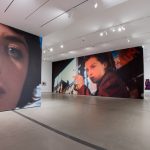

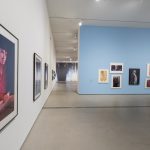
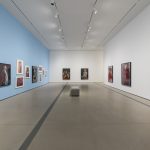
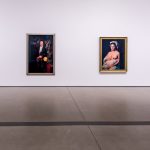
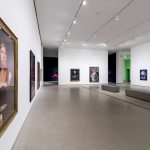
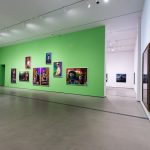

Leave a Reply